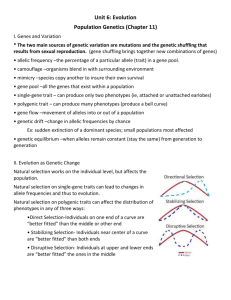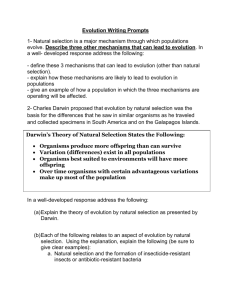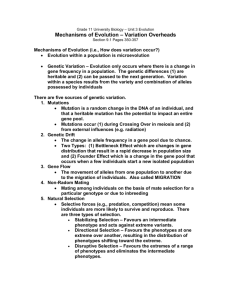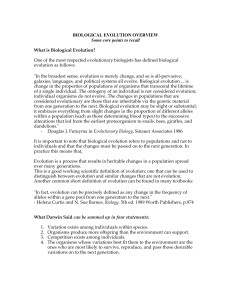Chapter 23 Reading Guide
advertisement
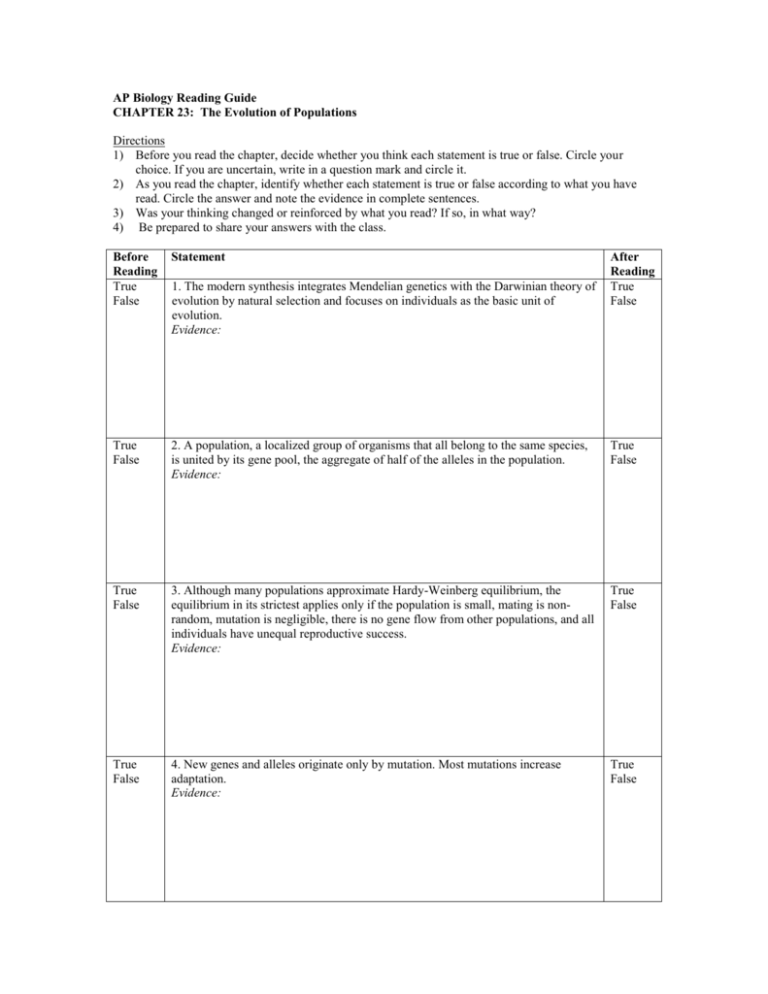
AP Biology Reading Guide CHAPTER 23: The Evolution of Populations Directions 1) Before you read the chapter, decide whether you think each statement is true or false. Circle your choice. If you are uncertain, write in a question mark and circle it. 2) As you read the chapter, identify whether each statement is true or false according to what you have read. Circle the answer and note the evidence in complete sentences. 3) Was your thinking changed or reinforced by what you read? If so, in what way? 4) Be prepared to share your answers with the class. Before Reading True False Statement True False 2. A population, a localized group of organisms that all belong to the same species, is united by its gene pool, the aggregate of half of the alleles in the population. Evidence: True False True False 3. Although many populations approximate Hardy-Weinberg equilibrium, the equilibrium in its strictest applies only if the population is small, mating is nonrandom, mutation is negligible, there is no gene flow from other populations, and all individuals have unequal reproductive success. Evidence: True False True False 4. New genes and alleles originate only by mutation. Most mutations increase adaptation. Evidence: True False 1. The modern synthesis integrates Mendelian genetics with the Darwinian theory of evolution by natural selection and focuses on individuals as the basic unit of evolution. Evidence: After Reading True False True False 5. Genetic recombination between sexually reproducing organisms produces most of the variation in traits that make adaptation possible. Evidence: True False True False 6. Differential success in reproduction results in certain alleles being passed to the next generation in greater proportions than others. Evidence: True False True False 7. Chance fluctuations in allele frequencies from generation to generation tend to reduce genetic variance in populations. Evidence: True False True False 8. Genetic exchange between populations tends to reduce differences between populations over time. Evidence: True False True False 9. Genetic variation includes variation among individuals within a population in discrete and quantitative characters, as well as geographic variation between populations. Evidence: True False True False 10. One organism has a greater relative fitness than another if it leaves fewer descendants. Selection favors certain genotypes in a population by acting on the phenotypes of individual organisms. Natural selection can favor relatively rare individuals at one end of the phenotype range (stabilizing selection), can favor individuals at both extremes of the range rather than intermediate phenotypes True False (directional selection), or can act against extreme phenotypes (disruptive selection). Evidence: True False 11. Diploidy maintains a reservoir of concealed recessive variation in heterozygotes. Balanced polymorphism may maintain variation at some gene loci as a result of heterozygote advantage or frequency dependent selection. True False Evidence: True False 12. Sexual selection leads to the evolution of secondary sex characteristics, which can give individuals a disadvantage in mating. Evidence: True False True False 13. Enhanced disease resistance based on genetic variation is one possible explanation for the persistence of sexual reproduction despite its lesser reproductive output compare to asexual reproduction. Evidence: True False True False 14. Structures result from modified ancestral anatomy: adaptations are often perfect solutions; the gene pool can be affected by genetic drift; and natural selection can act only on available variation. True False Evidence:




